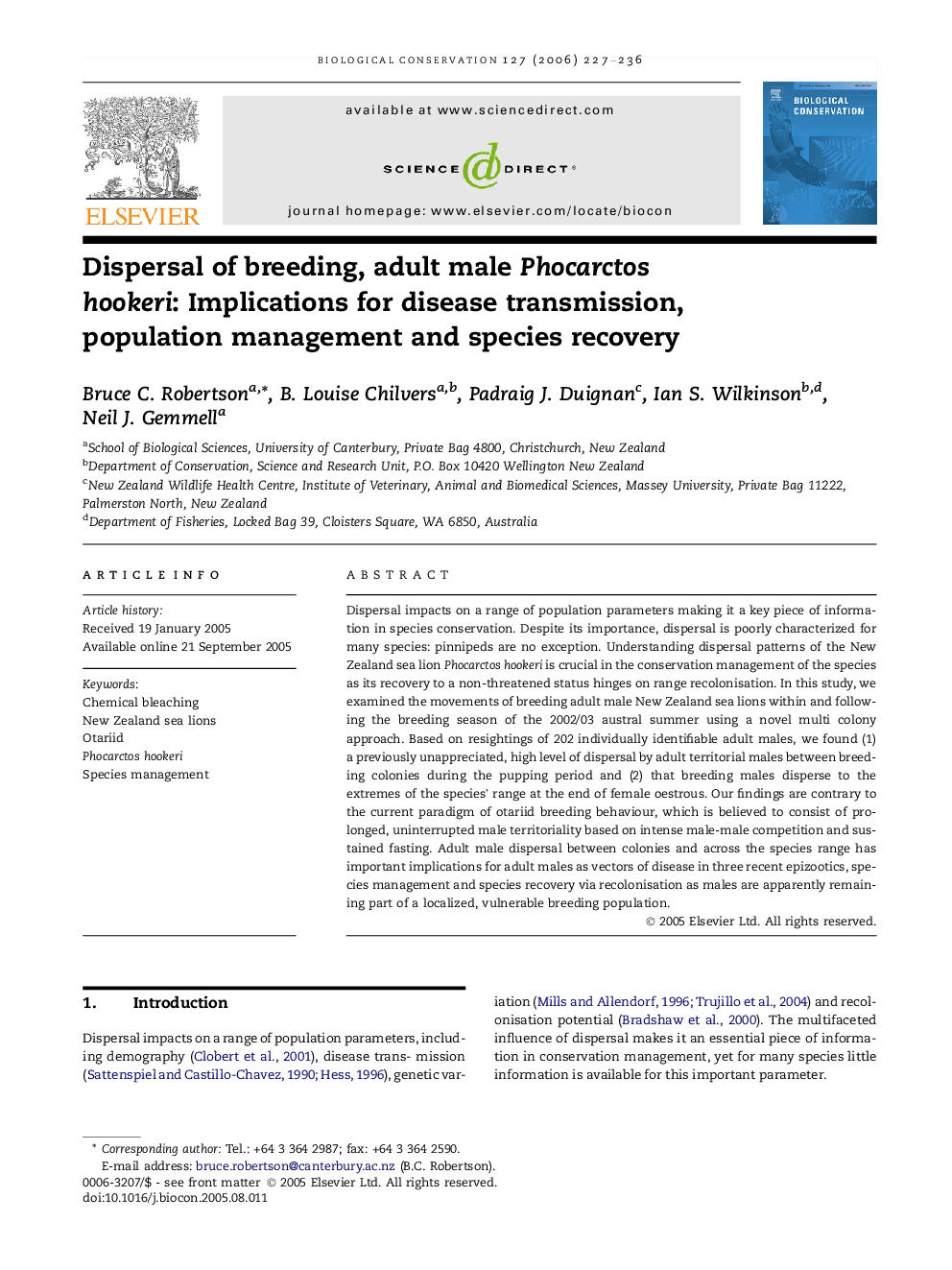| Article ID | Journal | Published Year | Pages | File Type |
|---|---|---|---|---|
| 4387893 | Biological Conservation | 2006 | 10 Pages |
Dispersal impacts on a range of population parameters making it a key piece of information in species conservation. Despite its importance, dispersal is poorly characterized for many species: pinnipeds are no exception. Understanding dispersal patterns of the New Zealand sea lion Phocarctos hookeri is crucial in the conservation management of the species as its recovery to a non-threatened status hinges on range recolonisation. In this study, we examined the movements of breeding adult male New Zealand sea lions within and following the breeding season of the 2002/03 austral summer using a novel multi colony approach. Based on resightings of 202 individually identifiable adult males, we found (1) a previously unappreciated, high level of dispersal by adult territorial males between breeding colonies during the pupping period and (2) that breeding males disperse to the extremes of the species’ range at the end of female oestrous. Our findings are contrary to the current paradigm of otariid breeding behaviour, which is believed to consist of prolonged, uninterrupted male territoriality based on intense male-male competition and sustained fasting. Adult male dispersal between colonies and across the species range has important implications for adult males as vectors of disease in three recent epizootics, species management and species recovery via recolonisation as males are apparently remaining part of a localized, vulnerable breeding population.
